I spent a whole day wandering Beijing
The weather was pleasant as it was spring

I spent a whole day wandering Beijing
The weather was pleasant as it was spring


“The threat or use of coercive action for the purpose of protecting or assisting people at risk.” This is how Daniela Abratt defined humanitarian intervention in the Denver Law Review.
After bombing Syria on April 6 in response to an alleged chemical weapons attack, Trump’s tweets declared that it was a “Mission Accomplished.” According to the New York Times, There was a total of 105 US missiles launched toward Bashar al-Assad’s Al-Shayrat airbase, along with French and British coordinated attacks. This airbase was the key element of a chemical weapons attack that killed more than 80 civilians. The Barzeh research and development center near Damascus and Homs was also targeted, but may have been emptied prior to the attack. Syria has a long history that has been disrupted by war and unrest, now the government and other forces are fighting viciously to hold what is left. A well thought out humanitarian intervention can mean the difference between a brutal dictatorship and peace.
Syria is bordered by Turkey, Iraq, Jordan, Israel, Lebanon, and the Mediterranean Sea. As written in Our World, Syria is the birthplace of civilization and home to a little over 17 million people. It gained its independence from France in 1946. 74 percent of the population is Sunni Muslim and the largest religious minority are the ruling elite, Alawites.

The Arab Spring in 2011 resulted in an eruption of anti-government protests in many Middle Eastern countries. When Syria followed suit, scholars from Khan University in Pakistan, Hafeez Ullah Khan, and Waseem Khan write that the Assad regime responded aggressively, often breaking up rallies with live fire. Since then, the war has brought devastation to Syria. The Syrian government, opposition rebels, and Islamic militants have proven that the lust for power and the struggle for ideals can result in the most horrible acts of violence. Foreign powers have turned the Middle East into their personal sandbox, sculpting the region to whatever shape is to their liking. The Syrian civil war exemplifies that dictators cannot rule easily. Dictators will face opposition until the essence of freedom in the human spirit is satisfied. But, while the regional forces rain down their fire (conventional and chemical), ancient towns and modern cities have been reduced to rubble and hundreds of thousands have been massacred and even more displaced.
According to the Center for Strategic and International Studies, since 2011, more than 400,000 people have died, including tens of thousands of children, since the beginning of the fighting. More than 13.1 million Syrians inside the country are in critical need of assistance and those who were lucky enough to leave, 5.6 million refugees, are now without a home. Health facilities have been specifically targeted, schools are now used as military base camps, and fuel shortages have made life even harder on the Syrian people. More needed infrastructure is destroyed every year the war continues.
Syria’s chemical weapons program was first discovered in August 2013 when Assad’s regime fired around 15 rockets filled with deadly chemical agent onto its streets, killing hundreds and wounding thousands. A second time, April 4, 2017, despite agreement on behalf of Syria to sign an international law convention that required a promise to destroy its chemical weapons stockpiles, Assad launched another attack. In 2017 at least 92 people were killed, including 30 children. Today, the town of Khan Sheikhoun is now the victim of two chemical weapons attacks within two years. Russia has blamed the airstrike on a rebel-held storage housing, but the opposition groups maintained that they lacked the capacity and ability to produce chemical weapons.
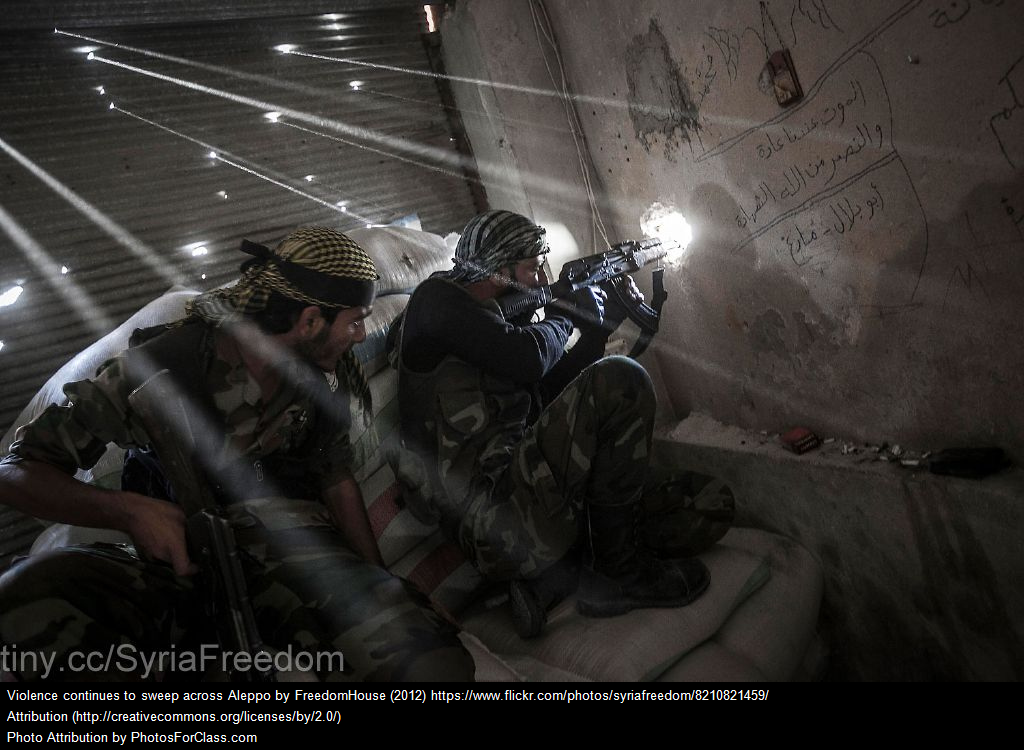
Russia is a key player in the Syrian civil war because of their role in propping up Bashar al-Assad after the violent crackdown of civilian protests during 2011. Through their partnership with Assad, they have been strengthening their power base in the Middle East. As a bordering nation, Turkey was at first reluctant to support the Assad regime but has since supported Russia in their efforts to fight the Kurdish forces.
While Iranian reasons are more sectarian in nature than the other two foreign powers. The Iranian government wants to maintain the status quo of a Shia government in Syria. Iran has been protecting Assad by providing both military and financial support. Iran has been investing heavily in the regime. Hezbollah is also a largely Shia Islamist militant group based in Lebanon.
Fateh al-Sham according to Khan University, is more dangerous than ISIS although they are allied with the rebels in the fight against the regime. They are secretly funded by Qatar and are the major guerilla army in Syria. Their goals are to overthrow the regime and establish an Islamic emirate in Syria. Although like the Islamic state in that they fight against Assad, their goals are separate from each other. According to BBC, Fateh al-Sham instead preferred to continue to affiliate itself with al-Qaeda. However, their name change from al-Nursa Front symbolizes their cutting of ties from that specific jihadist group.
The United States’ primary focus in the region is to eliminate ISIS. With help from the Kurdish, People’s Protection Unit (YPG) they have been making progress closing in on ISIS. The Islamic State being the very real specter of our interference in the region after the Iraqi war. ISIS has no allies, because they see everyone who doesn’t accept their caliphate as leader so anyone who doesn’t join is an enemy. The United States supports opposition groups that are deemed “moderate.” One such opposition group that is not supported by the United States is the previously mentioned Fateh al-Sham
There are many different groups and different causes tearing Syria in every direction. According to Khan University and as of 2017, the Regime has control of 35 percent of the country including strategically placed cities, such as the capital, and the coast which includes most of the population. The Islamic State also holds the same percentage of land however most of their land is uninhabited. The YPG along with the Syrian Democratic Front controls around 18 percent of territory. Lastly, other Rebels including Fateh al-Sham control around 12% of the country.
China and Russia have vetoed and blocked every resolution to take action. While this limited strike satisfies our need to “do something”, the long-term goals of the strike are unclear. According to the New York Times, these allied airstrikes will set back the production of sarin gas but will not stop Assad from further research and development of chemical weapons. According to General Mckenzie, “They still have ability to conduct attacks; I would not rule that out,” Debates surrounding the Mddle East, according to the Center for Strategic and International Studies’ Anthony H. Cordesman, have surrounded not what the path forward is to end the war, it is when we can exit.
Due to the ever-present threat of extremism and terrorism, it is easy to respond disproportionately to the events at hand, since the strategies of a terrorist is to goad, terrorize, and destroy. When one terror group is eliminated by force, another pops up in its place. Due to this strategy I believe the best counter that the US should continue to build community resilience by staying in the region and do what we can deliver immediate humanitarian assistance. The Kurds have proven to assets in our fight against the Islamic State and may be at risk if we were to abandon the region after investing our “blood and gold.” While we have been hesitant to intervene, there is a larger range of options.
The United States should accept more refugees, on the condition that they go through security and background checks that would certify that they are not malicious actors. The US should attempt to prevent direct military confrontation with Russia, while undermining their influence in Syria through directly addressing the underlying causes of the fighting. Only the right combination or pressure and persuasion with the sole end goal being a ceasefire and resumption of political negotiations.
Focusing on the long-term stability of Syria as well as improving the United States’ position in the region leads us to believe that using aid as leverage by adding conditions would lend itself to that. While maintaining our presence in the area is critical to establish deterrence against another chemical attack, a purely reactionary approach to the war will only let the war drag on. We are already involved and leaving will do nothing to improve the everyday life of the Syrian people. As Anthony H. Cordesman illustrated in his article, we “must not try to remake the world in our image, but we must act to help nations and peoples remake their world in theirs.”
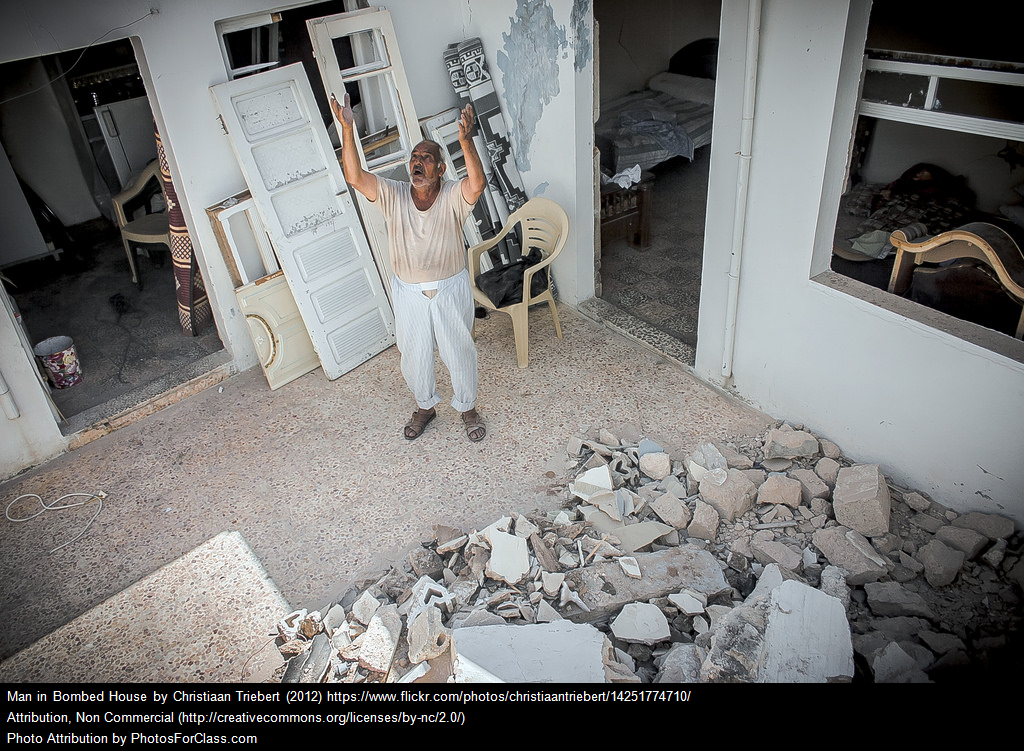
Khan, Hafeez Ullah, and Waseem Khan. “Syria: History, The Civil War and Peace Prospects.” Journal of Political Studies, vol. 24, no. 2, 2017, pp. 557–573.
Abratt, Daniela. “U.S. Intervention in Syria: A Legal Responsibility to Protect?” Denver Law Review, vol. 95, 2017, pp. 21–71.
Cordesman, Anthony H. “Syria: When and How Does This War End?” Syria: When and How Does This War End?, Center for Strategic and International Studies, 10 Apr. 2018, www.csis.org/analysis/syria-when-and-how-does-war-end.
Dalton, Melissa G. “Trump’s Missile Strikes Show He Needs a Broader Strategy in Syria.” Fortune, 7 Apr. 2017, fortune.com/2017/04/07/trump-syria-airstrikes-strategy-missile-strikes-us-attack/.
Gibbons-Neff, Thomas. “Missile Strikes Are Unlikely to Stop Syria’s Chemical Attacks, Pentagon Says.” The New York Times, The New York Times, 19 Apr. 2018, www.nytimes.com/2018/04/19/world/middleeast/syria-strikes.html.
Aliprandini, Michael. “Syria.” Our World, 2013. EBSCOhost, 0-search.ebscohost.com.libus.csd.mu.edu/login.aspx?direct=true&db=ers&AN=88391195&site=eds-live.
“Syria War: Who Are Jabhat Fateh Al-Sham?” BBC News, BBC, 1 Aug. 2016, www.bbc.com/news/world-middle-east-36924000.

Have you ever wondered about what the heck Cullah’s new album is going to sound like? Well, wonder no more here is the ever genre-bending Cullah’s new single, Moonlove Funk.
“Why, man he doth bestride the narrow world like a “Cullahsus”; and we petty men walk under his huge legs and peep about to find ourselves dishonorable graves.”
When I asked him to describe his album in a single sentence, his response was this Shakespearian phrase. Taking in the narrowness of the world and this phrase describes the darkness of shadows cast by things that we can’t control. He describes the themes of his album with rhetorical flair. But it doesn’t describe it all in a nutshell. Not by any means.
When you get Ian (the mind behind Cullah) talking it’s hard to tell when he’s going to stop. This is a quality that has allowed him to produce album after album without so much as a hiccup. On the advent of his upcoming 27th birthday he is now releasing his stylistic 12th album. Different from so many artists who have landed on top spots due to pure luck and catchy singles; Cullah redefines maximizing your potential and has become inseparable from the music that he lovingly records, rerecords, records again, and remasters.

With his aptly named brand new album Cullahsus, he takes us back to his roots. His funky beats and that Milwaukee melodic spirit that never left now accompanies every song. His bachelors’ in Computer Engineering and the old school MC Cullah shows in the electronic tinkering that defines his song, “Till at Last”. Well-placed sampling and cheery chirps travel to your ears with ease. Positivity beams at the fall of every beat and brings a smile to your face, making you wish for just one more verse.
Budgeting his food solely from the small amount money he makes from Spotify since he has refused to fully commercialize his music; he declares his resolute spirit through “King Jebediah (The Falcon Messiah)”. The themes infused the album are a lack of control of circumstances to a larger benevolent beast. In Cullah’s case, King Jebediah seems to be the music itself that he creates and is provided by.
This is the first year that he has been able to concentrate his efforts solely on creating his music. Unhindered by other responsibilities, in “Hurrycane” and “Helios 3” he seems to be both overwhelmed and liberated in the storms and boundless space of creativity.
Despite these new joys and pains, a bit of the previous “Cullahmity” album influences “Cullahsus”. A heartbroken Irish trill echoes in “The Grief of Ceridwen” illustrating the loneliness that comes with the freedom expressed in his other songs.
The way “I see” begins initially makes you think the song is going in a completely different direction than Cullah decides takes you. Starting with a genuine hook, he takes your hand and leads you through a story of an individual rising up against nature and winning the fight. Using his new violin and banjo skills that he has acquired for the album he pours his heart out in a Call of the Wild twist on classic folk sensibility.
There are so many other songs that stitch the freedom of life in all of its joys and sorrows together in one man’s work of art. The sheer volume and the quality of the work that Cullah annually presents is impressive. He is an artist to watch for.
Find even more of his music FOR FREE on his website www.cullah.com
OR if you have spotify and if you have ever been to youtube he’s also on there!
https://www.youtube.com/channel/UCSj-fZZlBZTCTEBpiMwMWGg
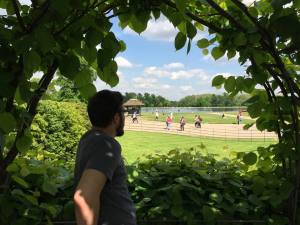
Credits for the wonderfully done Album Cover go to
BRENDAN LOSCAR

http://brendanloscar.com/
Clare McCullough
What is now the Republic of Turkey was once a great empire and is unique in that it is transcontinental. During the time of Sultan-caliphs the only source of law was the revelation of God. (Time 1960) Society was broken up into three categories, the lower class, Reaya which was the mass of the population, and the two ruling elite categories, the Askeri, which was the military, and the Ulema, which was made up of religious scholars responsible for moral order. According to Zurcher, “by 1800 the governmental system could still be characterized as a ‘patrimonial’ extension of sultan’s own household.” The main task of the Sultan was to defend the Islamic community against the outside world. The Ottoman empire was mostly concerned with security and maintenance of law and order and controlled coinage and other public works. Equality before the law was something that wasn’t a part of Ottoman culture, which was a mostly agrarian economy (Zurcher). Democratization in Turkey has always been a goal out of reach for a country stuck in the cyclical methods of modern coups and revolutions.
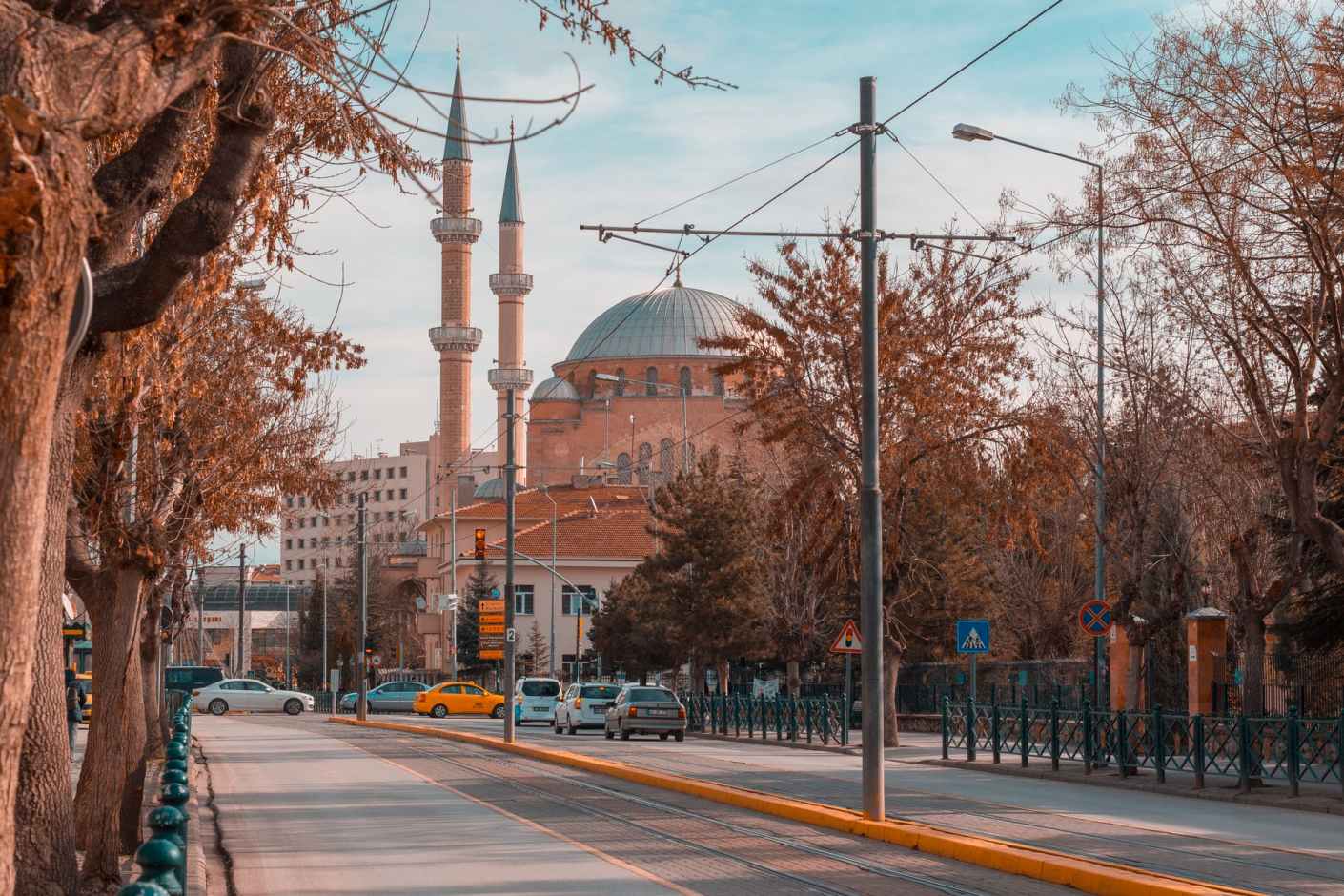 At the start of the 1800’s, Sultan Selim III launched a series of reforms named Nizam-i Cedid (New Order), which was aimed to increase the strength of the central state organization to combat external and internal enemies. In 1807 the Ottoman Empire’s government was changed by a coup d’etat led by a coalition of conservative ulema and janissary officers (servants of the sultan). After the coup, which weakened the Ottoman Empire’s military, they started to lose territories as it was incorporated into the European economic system.
At the start of the 1800’s, Sultan Selim III launched a series of reforms named Nizam-i Cedid (New Order), which was aimed to increase the strength of the central state organization to combat external and internal enemies. In 1807 the Ottoman Empire’s government was changed by a coup d’etat led by a coalition of conservative ulema and janissary officers (servants of the sultan). After the coup, which weakened the Ottoman Empire’s military, they started to lose territories as it was incorporated into the European economic system.
During 1839-1871 a period called Tanzimati Hayriye (beneficial reforms) radically altered the structure of the Ottoman Empire. A supreme court for judicial regulations was created and helped carry power from the palace to the Porte (bureaucracy). During the Crimean war, the Caliphs expanded and modernized the army. The Tanzimati period brought tax reform, bureaucratic specialization, limited secularization and an effort to bring equal treatment of people before the law. However, with these reforms, a movement called the young ottomans pressured for democratization, leading to unrest during and after a famine where taxes were increased on the Reaya. Following the reforms, The Ottoman empire went to war with Russia and lost territory in the Treaty of Berlin (1878).
The push for democratization was too little too late, even after the establishment of an Ottoman parliament in 1876 due to rising nationalism among the Armenians, Kurds, and the Young Turk movement. (Zurcher) This was described as the first constitutional period which spanned from 1878-1909 (Cook 2010).
The Second Constitutional Period was during 1908-1918, the result of a Unionist movement, The Committee of Union and Progress, or the CUP, experiencing a counter revolution shortly after taking power. The CUP’s political crackdown led to a large-scale insurrection in Albania. Soon after the Balkan war, the Ottoman’s losses from internal and external forces led to the Empire losing nearly all of its European territories, a total four million inhabitants. In 1913, there was further consolidation of unionist power, what Zurcher referred to as the ‘triumverate’ of General Enver, Cemal, and Talat. World War One brought many of the divisions to light, especially in the case of the Armenian deportation phenomenon that resulted in an enormous number of deaths.
There were three points that are often disputed around the deportation of the Christian minority. First in question was the military necessity of the operation in relation to WWI. Secondly disputed was the number of deaths, estimated to be from 200,000 to 800,000, leaving a wide margin of error. Another issue to address is the question of whether the intent was to commit genocide. (Zurcher). Democratization might not have benefited non-turks, but under the CUP, women had a greater amount of liberties and the Unionists approached economics from a classically liberal lens, taking steps to modernize and bring the Ottoman Empire closer to the West.
From 1921-1922 an independence war occurred that led to the National pact and subsequent one-party state, declaring Turkey a republic. It was just the beginning of major conflicts between military secularism and Islam. (Cook 2010) The newly established parliament abolished the caliphate and all members of the Ottoman era were replaced, along its old constitution from 1876. In 1921 the Law on Fundamental Organization gave power to the nationalists, served as a rudimentary institutional base, and identified the Grand National Assembly as the sole representative of the people (Cook 2010). During this time of flux the nationalists were split between the Progressive Republic Party and the eventual victor, the Republican People’s Party. This party was led by a man called Mustafa Kemal Pasha who was to change the face of the Republic of Turkey after its founding in 1923. (Cook 2010)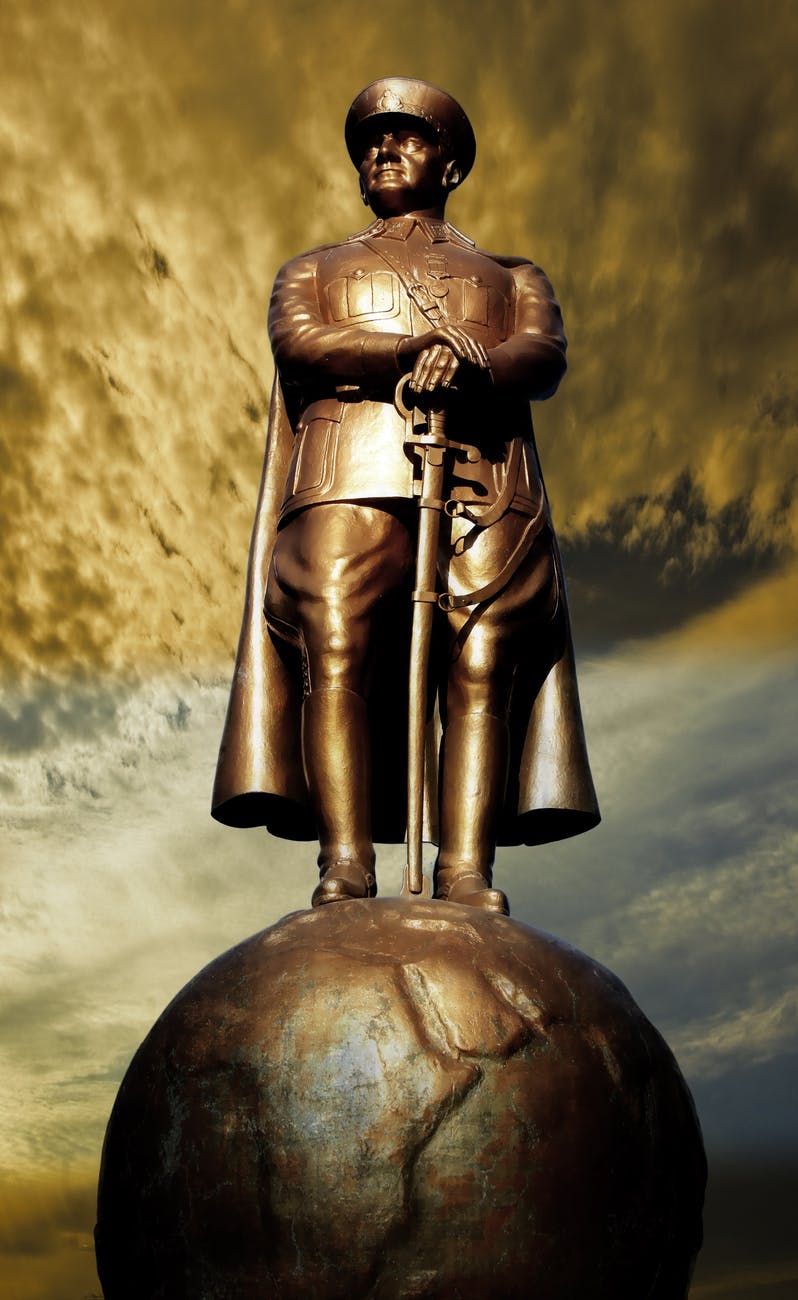
The Kemalist One-party state stretched from 1925-1945. Starting with the promulgation of the Law on the Maintenance of Order, Turkey became an authoritarian one-party regime and dictatorship under the guise of a republic lead by its Great National Assembly. Secularism and nationalism had been the distinctive characteristics of the Young Turk ideology since 1913. Populist themes of national solidarity put the nation’s needs before those of any one group or class. Kemal Ataturk established a new alphabet and made the use of last names commonplace; he radically secularized the state, education, and law along with all aspects of social life. There was a notable absence of check and balances in the 1924 constitution (Cook 2010). When Ataturk died from cirrhosis of the liver in 1938, his college Ismet Inonu became the national leader. During this time, the government of Turkey closely resembled the Italian fascist regime.
A transition to stronger democratization occurred in 1945-1950. After WII, general elections were held and it was the Democratic Party versus the RPP. The Rule of the DP and its president Bayar lasted for a decade. With the end of Inonu’s administration, Celal Bayer was now the president of the republic, with prime minister Menderes. During this time, there was a relaxation of secularist policies that made Islam more prominent (Zurcher). Military regimes presided over the multi-party democracy period of 1950-1986 (Carkoglu 1994)
The second Turkish republic began in 1960 after the first military takeover of the newly democratic system headed by the DP. Power was now in the hands of the National Unity Committee. A national security council was established, providing a much more liberal constitution, allowing for a multiparty electoral system to be institutionalized. (Cook 2010) With this wave of democratization, the Islamic Justice Party won the election in 1965.
In 1971, there was another interruption of democracy by the Turkish military (Carkoglu 1994). There were a series of coalition governments between 1973-1980 which were weak and experienced heavy deadlock, especially with political violence becoming a bigger and bigger issue. The end of the second republic was due to “increasing law and order problems, Kurdish separatism, and a political system in deadlock and an economy in tatters” (Zurcher). There was a crackdown on democratization using the newly reformed Penal code which complemented the constitutional and legal restrictions on political parties (Cook).
Yet another military coup began the third republic in 1980, orchestrated by General Kenan Evren, nullifying the 1961 constitution. The generals saw themselves as saving democracy as they made short work of suppressing terrorism. The new constitution concentrated power in the hands of the Executive and increased power of the National Security Council. They limited the freedoms of the press, trade unions and the general rights and liberties of the individual while at the same time making voting compulsory. During this time there were three parties allowed by the military, the Party of Nationalist Democracy which was supported by the generals, the Populist party which was supported by the traditional Kemalists, and the Motherland Party, a group that promised economic reforms. The Motherland party won the election. In 1993, the MP’s leader Turgut Ozal died, and two years later, the Islamist Welfare Party takes control. In response to the conflicts between Islamist and secular philosophy, 1997 saw another attempt at a coup’detet which was an effort at Kemalist restoration.
In 2002, the Islamist based Adalet vs Kalkinma (Justice and Development Party AKP) has an absolute majority in Turkey’s parliament. It’s been nothing but turbulence for the Turkish people, in 2016, another coup attempt by the military was stalled by its people (Al Jezeera). President Recep Tayyip Erdogan blames his former colleague for the coup attempt, Fethullah Gulen, who is the leader of the Hizmet movement. The clash between secularism and Islam has a long and violent history in Turkey along with a seemingly cyclical history in regards to the military’s intervention in government.
Works Cited
Cook, Steven A. “Turkish Paradox: Islamist Political Power and the Kemalist Political Order.”Ruling But Not Governing The Military and Political Development in Egypt, Algeria, and Turkey. Baltimore: Johns Hopkins UP, 2010. 93-148. Print.
Carkoglu, Ali. “Conflict and Development in Turkey: The Problem of the Coup Trap.” Ed. Eduard A. Ziegenhagen. Political Conflict, Political Development, and Public Policy. Westport: Praeger, 1994. 69-100. Print.
Zurcher, Erik Jan. Turkey: A Modern History. 3rd ed. London: I. B. Tauris, 2004. Print.
Stewart, Desmond. Life World Library. New York: Time, 1960. Print.
Jazeera, Al. “Turkey’s Failed Coup Attempt: All You Need to Know.” Turkey News | Al Jazeera. Al Jazeera, 30 Dec. 2016. Web. 03 May 2017.
Clare McCullough
Southwest China is home to many of China’s major rivers and headwaters of three other major rivers, among them the most important being the Lancang, Salween, and the Yangtze. Despite Yunnan’s name meaning south of the clouds and having the most complex water system in all of China. The province of Yunnan is experiencing a drought.[1] Floodwaters are contributed by unrestrained deforestation of the local habitats and the enormous amounts of pollutants that are emptied in all of the rivers of China. The drought is due to the disruption of natural water flows by hundreds of hydroelectric projects.
Water has always been a wild card in China’s history. When the rains fall, they fall unevenly, and when the floods hit it is a source of massive destruction.[2] In fact during imperial times, the emperor’s legitimacy was based on the occurrences of natural disasters as a sign of his Mandate of Heaven. Peasants could theoretically depose an emperor when there would be a persistent issue regarding natural disasters. Flooding has been a perpetual issue, especially in Yunnan. Although these floods bring the fertile soil necessary to develop agriculture they sweep every surrounding city away with their economically damaging waters.
The five major rivers that originate in Southwest China have more than 600 tributaries and branches. There are 221 billion cubic meters of water in Yunnan alone. Of all Chinese plant species, 60% live in Yunnan and the Salween river valley is home to the highest biodiversity concentration in the world. This river valley is home to more than 80 rare and endangered animals.[3] Despite this biodiversity, there are big problems that will not go away. The winter-spring drought has been persisting since 2009.[4] In the dry season, some areas have no drinkable water at all. The lack of drinkable water and water that can be used for agricultural purposes has had a very negative effect on the local habitat. This drought has affected three million acres of farmland and caused a substantial reduction in annual grain output. [5]
From 1950 to 1980, it is no secret that China saw a lot of change and development for better or for worse. However, Yunnan’s forests suffered the largest period of destruction in the entire history of China. While, normally the wetlands and forests would soak up the water like a sponge for the year and would make the distribution of water more even throughout the landscape, but this doesn’t seem to apply as well today due to deforestation and the clearing of land for agriculture and mining. In 1950 there were 1.4 billion cubic meters of forest coverage, and now these forests saw a reduction to only 980 million in 1981.[6] The forest coverage is getting smaller every day while the trees have been replaced by, however efficient it may be a method for fertilizing the land, destructive slash and burn agriculture. By burning the trees and planting crops instead there is less organic material to hold the soil in place. But by telling the farmers of Yunnan to stop producing would mean a substantial loss of 10 million tons of grain every year. But the fact remains that only 9% of Yunnan’s original forest cover still exists.[7] Since the 1970s, the wetland areas have decreased by more than 17 percent.[8] The impact of this fact is dramatic. The major floods have gotten more frequent as well as the mudslides that accompany them as well as destabilizing the habitat and larger biosphere. Since the 1950s the effects of flooding have taken the lives of over 5,000 people as well as displacing hundreds of thousands.[9]
Although deforestation and destruction of the wetlands plays a huge role in the exacerbation of floods, it doesn’t answer the drought question. The answer to this is that the water of Yunnan’s complex river system is being redirected into dams and utilized for these hydropower projects. China’s energy demands have grown exponentially, in the 1990s America would use as much energy in two weeks as China would use in an entire year. Since 2001, China’s energy consumption has expanded 1.5 times the rate of economic growth. The dried-up oil fields and the clouds of coal-produced air pollution that have created 16 of the 20 most polluted cities in the world has lead China to scramble for alternatives. It is true, there are a lot of benefits to hydropower. Hydropower projects would bring greater opportunities to the rural people by providing them with more energy, critical infrastructure such as paved road and ultimately give the local governments a larger tax base to invest back into the communities of Yunnan. The Nu Salween river project alone would increase the total energy supply by 20%, the equivalent of 50 million tons of coal. [10] Hydroelectric power is clean and renewable as well as easily controlled from Beijing with the added bonus of being politically independent from foreign oil and the forces and pressures of coal. Not to mention, hydropower is one energy that has a lot of potential. In 2004, Yunnan was only been utilizing 7% of its hydropower potential.
Of the 45,000 large scale dams in the world, (15m or higher), half are in China. Yunnan provides 10% of all China’s hydropower.[11] Despite the benefits of Hydropower, it is massively disruptive to the natural river’s flow and the unnatural regulation of the flood plains have resulted in disastrous consequences. The three gorges dam is a perfect example. In 1980s there was an investigation into the viability of such a large dam. This is a project that has long been pursued by the Chinese Communist Party. However, the ultimate title of their research was, “The Three Gorges Project should not go ahead in the Short Term” There were 6 reasons for their deferment. Frist, the total coast would not be the initially projected 20 billion Yuan, but 60 billion, so there would be an overspending issue, second, flood control wouldn’t be solved in the lower and middle reaches and would actually be increased in the upper reaches, fourth and most importantly, the silt and sediment buildup problems couldn’t be resolved. The fifth issue would be that it would harm the ease of navigation of the river, six, due to the sediment buildup the high cost and long construction period would produce slow output and poor results, and lastly more than a dozen cities would have to be resettled. But despite all of these impacts, in 1992 the National People’s Congress voted overwhelmingly in favor of the project.[12]
The annual flow of the Yangtze is 451 billion cubic meters but the flood control capacity of the three gorges is only 22 billion cubic meters. While the water level can be adjusted to adapt to this fact, the silt and sediment buildup largely reduces its capacity to control the overflow of this massive river, leading even small floods to create large disasters. Such a disaster occurred in 1996 when a big overflow and the subsequent rising waters flooded into a nearby city and killed 170 people, leaving more than a million homeless and doing more than 30 billion yuan in damage.[13]
According to a 2004 study, a total of 16 million people have been resettled due to hydropower projects in the last 50 years. Despite promises of being compensated, 10 million of these displaced persons still live in poverty. Every year 40,000 new people need to be resettled as a direct result of this disruption in the water’s flow. This issue leads not only to economic suffering but also creates new social problems. The people who stay behind are no better off. The large reservoirs are inaccessible for drinking water and they have to rely on infrequent rains which may not come at all. The electricity towers that are hung up mark their journey eastward in reality instead of contributing to the local communities.[14]
Due to deforestation the sediment problem is only compounding the strength of the floodwaters. Without tree roots holding the earth together it gets washed into the river. But the soil isn’t the only thing getting washed into the river. The water of the lower Yangtze river is undrinkable. The garbage of the 400 million people that live on the banks gets poured or thrown into the waterway. In fact, the Yangtze gets about 6.3 billion tons of pollutants and waste from the cities, but this isn’t even including the 20 billion tons of waste that comes from its tributaries. A major tributary of the Yangtze called the Min which exists in Sichuan and flows into Yunnan has over 50 sources of pollution that release 130 million tons of waste. Zinc and lead mining have sent heavy metal concentration in the water above permitted levels.[15] But the population is growing, and water now needs to be imported.
By tightening regulation and adequately enforcing these policies and creating an appropriate waste disposal facility we can improve the quality of the water. Flood control is the major purported benefits of these dams. However, the garbage and sediment issues are big obstacles to their ability to solve this problem. By destroying the wetlands, they produced food, energy, and clothing but they also became victims of the water.
[1] Ma Jun. China’s Water Crisis, East Bridge, 2004.
[2] Fangyi, Yang, and Zhou Jiading. “Why Has Water-Rich Yunnan Become a Drought Hotspot?” Chinadialouge, 2013, www.chinadialogue.net/article/show/single/en/5940-Why-has-water-rich-Yunnan-become-a-drought-hotspot-.
[3] Ma Jun.
[4] Fangyi, Yang, and Zhou Jiading.
[5] Badkar, Mamta. “660,000 People In China Have Been Living With Almost No Water For Four Years.” Business Insider, Business Insider, 1 Mar. 2013, www.businessinsider.com/drought-in-chinas-yunnan-province-2013-3.
[6] Ma Jun.
[7] Fangyi, Yang, and Zhou Jiading.
[8] Cao, C. X., et al. “Wetland Changes and Droughts in Southwestern China.” Geomatics, Natural Hazards & Risk, vol. 3, no. 1, Feb. 2012, pp. 79-95. EBSCOhost, doi:10.1080/19475705.2011.588253.
[9] Ma Jun.
[10] Mertha, Andrew. China’s Water Warriors, Ithaca: Cornell Univ. Press, 2008.
[11] Mertha, Andrew.
[12] Ma, Jun.
[13] Ma, Jun.
[14] Mertha, Andrew.
[15] Ma, Jun.
Clare McCullough
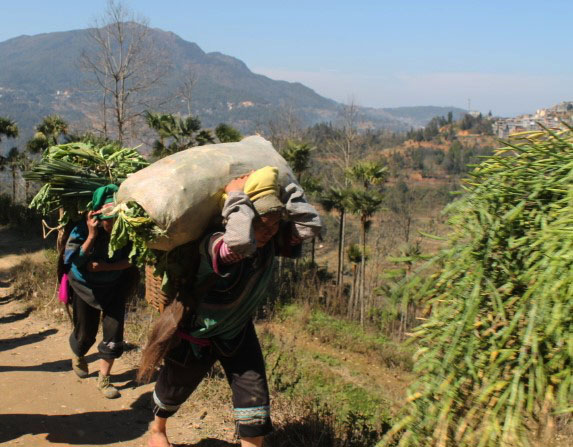

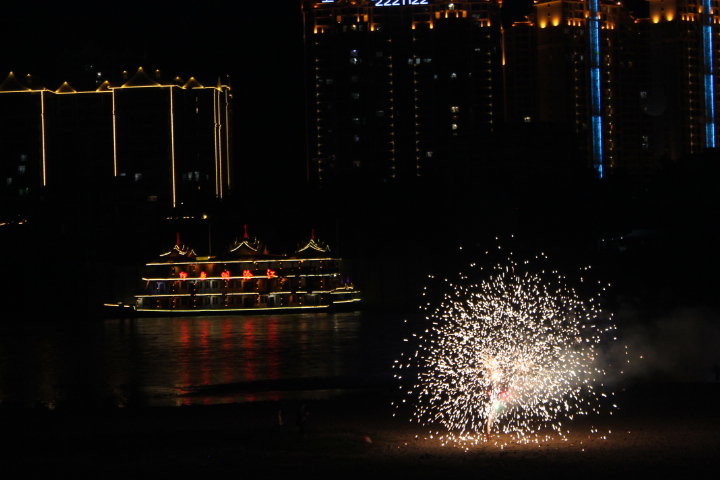
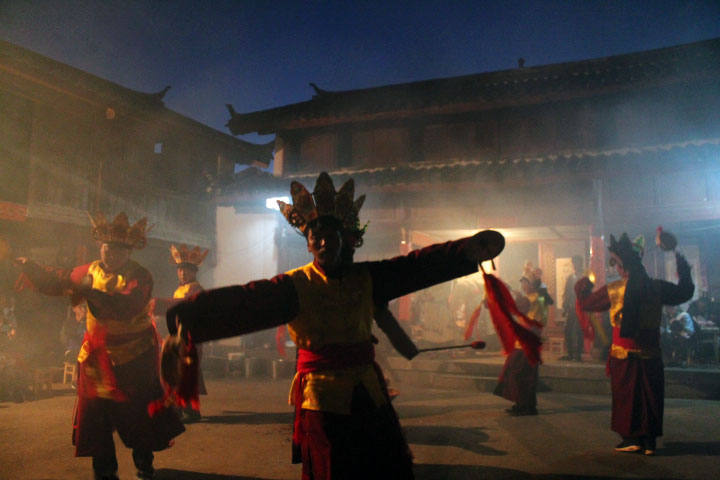


Clare McCullough
There has always been a divide between the skilled workers and unskilled workers. Race is an important intersection to examine, for example, unlike the many examples of discrimination against African Americans, for unskilled white America, as it has been pointed out by Gest in his book The New Minority, there hasn’t been many obstacles put in their path other than the ones they lay themselves. The subtle changes to our rhetoric and economy have been mounting over the post-industrial period, creating a stark political division.
A division and cognitive dissidence that has been illustrated in the book, Strangers in Their Own Land, where preventable environmentally-caused fatal diseases and general community degradation is a moot moral point in voting compared to abortion. In dialogues, an “us” versus “them” rhetoric becomes apparent, as put by Kevin Williamson in his article, “Chaos in the Family, Chaos in the State: The White Working Class’s Dysfunction”, in fact there is a “rhetorical need to invent moral debasement”. Lending itself to this growing resentment is the new hyper-mobile world in which fake and biased news has been a constant comfort and an accessible aid to those who only consume things that suit their current worldview, creating a self-reinforcing propaganda bubble. This mindset is exacerbated by a rapidly changing demographic and social ills such as the doubling divorce rate. According to Williamson, this mindset sees the concept of a traditional family as having been destroyed and “traditional avenues for achieving respect, status, and permanence” are no longer available. This perception of the challenges of globalization has been filled in with promises of protectionism, anti-immigration, and national security with nationalistic flair. As the blue-collar jobs move overseas, those who would be qualified for no other work than unskilled labor are no longer able to contribute to the family the same way that their grandfathers did.
Lastly and most importantly are the economic changes in our post-industrial society. The single-industry towns in which there was plenty of jobs and opportunity from one business, but like many farms that rely on a mono-culture, when the industry left the town there was nothing there but empty warehouses and pollution. Resentment builds up against those who take what little they have left, the “those” meaning the government’s taxation and, everyone else seems to be cutting in line in front of the white blue-collar worker. These post-traumatic towns, as referred to in The New Minority, are the ruins of a society thriving before globalization. According to Williamson, we now make the capital goods, while more and cheaper consumer goods are created by poorer countries than the US. The white working class has not been victimized by outside forces, they have failed to adjust to a changing society that demands change.
We see this in the fiction book, The Age of Miracles. We see those who adjust their clocks to the earth’s slowing turn and try to get on with their lives and then the people grasping onto the past era; Clock timers vs real timers. These changes were subtle just like they are in real life, the minutes pooling into hours and slowing changing the composition of the day. The main character’s neighbor Sylvia was a real-timer. She stayed the longest out of all the real timers on the block, when the others all left and created their own new communities, and those left behind were subject to prejudice and aggression from neighbors. This resentment between the groups comes from a nostalgia much like what the white working class feel today.
Clare McCullough
Art has long been used to make a statement, or simply be an expression of the artist. Surrealist scenes have often permeated more modern works of art. But sometimes these modern artists incorporate old techniques with the new in order to express their ideas of the world. Such as Ablardo Morell’s photograph, “Empire State Building in Bedroom”, in which Morell uses light and framing to express the impact of his culture shock when he first arrived to the United States.
When you first walk into a city, you see the skyscrapers tower over you at impossible heights. Light filters through the giants that are made of steel and glass and cut shadows into the sky, defying the natural order of things. Intimidating, frightening, foreign, at least that’s how Ablardo Morell must’ve seen it when he immigrated to America at a young age with his parents from Havana, Cuba in 1948. He received his undergraduate degree from Bowdoin college in 1977 and his love for art extended from there. In 1977, he obtained an MFA from the Yale University of Art (Morell). After the birth of his son, he started experimenting with the Camera Obscura in 1986, which is Latin for “dark room”.(SFMOMA)
A Camera Obscura is an ancient light trick and is considered one of the first proto-cameras . A Camera Obscura is something that, according to National Geographic, “receives images just like the human eye—through a small opening and upside down. Light from outside enters the hole at an angle, the rays reflected from tops of objects, like trees, coursing downward, and those from the lower plane, say flowers, traveling upward, the rays crossing inside the dark space and forming an inverted image.” When Morell was teaching a course on photography at an art college he turned his whole classroom into a Camera Obscura, he knew he had something. And so he started creating his works, turning darkened rooms into fantastic landscapes one of which was “Empire State Building in Bedroom” As a result.
The Empire State Building is draped over a bed missing from the city skyline, which is inverted in the background over the bed and nightstand, looking limp and tired looking, ”as if it had just come home from the hard work of skyscraping all day” (National Geographic). The building is shiny and casts a dark shadow over the white sheets. Above the inverted skyline, the sky is filled with clouds, making the skyline itself a little dim. The framing of the image is a bit disjointed, things that aren’t supposed to be in the photograph, are there. The skyline on the top and the shadow of the bed on the bottom leaves a large hole in the left-side of the painting. Although the physical wall of the room in which the camera obscura was created changes direction, it seems as if the skyline is almost unaffected by this, continuing on making a seemingly flat picture.
In this photograph, Morell was trying to convey the emotions of disorientation, and disbelief that he felt during the culture shock when first arriving to America. When Morell was 14, and he moved to the comparatively developed USA from Cuba, where he saw the towering buildings of New York. This changed his world forever. And so, he uses the Camera Obscura’s inversion to portray his absolute disorientation when first seeing the Empire State Building. By omitting the empire state building from the city’s horizon and portraying the sharp figure of the empire state through the use of shadow and light as limp, and silvery platinum he placates the imposing building and makes it seem even more strange. The use of a cloudy sky instead of a stark bright one emphasizes the ethereal feel of the photograph that he tried to convey.
Through light, he blurs the imagined lines between landscape and dreamscape, waking us up and almost jolting us back to more of an innocent time. His use of light makes the empire state building look almost liquid, the light seemingly coming in from the cloudy sky, his use of light is disorienting and adds to the simplistic irrational element of the photograph. The deep shadows of the piece put emphasis the bed in the middle, grounding the photograph. The only truly real thing in the room was the bed since it is the only thing that has clear lines caused by the lighting. The angled position of the familiar object is where the main emphasis is, leading your eye back to where the pillows are and ultimately, where the skyscraper is. Positioning is very important in this work as Morell uses framing to create more space in the sky by omitting the empire state building, and essentially taming it. Through that, he conveys what he would have dreamed of doing at that young age into an unlimited version of reality. By blending the famous building into a domestic scene, he gives himself more control over it making the skyscraper more unusual, conveying what he might have felt when undergoing this huge culture shock.
Camera Obscuras have been used throughout human history. Ablardo Morell brought this ancient technology back and so turned out our perception. He turns our dreams into landscapes through his use of framing and light in “Empire State Building in Bedroom”, Morrell expresses his reaction to the then foreign to him, USA.
Works Cited
“Abelardo Morell, Camera Obscura Image of the Empire State Building in Bedroom, 1994.” SFMOMA. San Francisco Museum of Modern Art, n.d. Web. 07 Dec. 2015.
“About Abelardo Morell.” Abelardo Morell. If Magazine, 9 Dec. 2013. Web. 07 Dec. 2015.
O’Neill, Tom. “Bravura Camera Obscura.” Camera Obscura. National Geographic, May 2011. Web. 07 Dec. 2015.
Clare McCullough
A public policy issue that is extremely important is environmental regulation. This issue has what might be the largest impacts out of any other facing us today, and it will start truly affecting us around as soon as 2050; within my lifetime. A recent policy that has tried to tackle the issue of pollution and the warming climate is the Clean Power Plan, which aims to combat climate change by putting caps on CO2 emissions. Another big environmental step forward under Obama’s administration was The Paris Climate Agreements which occurred Winter of 2015. In the past policies, have tried to reduce carbon emissions and maintain environmental health through incentive and disincentive programs.
Conservation policies are important because its shown that if we continue living and consuming the way that we have; it will lead to extreme weather patterns. There will be long droughts in some places and flooding in others. Often, I believe, we forget how dependent we are on our natural resources. The necessity for a sustainable future is paramount, if we are going to raise quality of life as a planet. The point of progress is to grow and be happy, and if we cannot achieve at least the basic rights of clean air and water then what was the point? In the end, all we have is our health and our environment in which we live in.
Tackling climate change will require international action. The time for action was yesterday and we can’t afford to ignore the impacts of the fact of global warming. The unsustainable use of dirty energy will create a dramatic transformation that we are already seeing the beginning of the impacts. 2014 was the hottest year until 2015 was the hottest year. As the oceans rise, small island countries will start to disappear as well as low lying cities such as Dakka and Shanghai and will create thousands of millions of refugees, pushing the rapidly growing populations elsewhere and compounding food crises which are already fragile in a lot of countries. Crops will not grow the same in different climates, so there will be less food to put on the table, over the long-term food production will decrease and the poorest among us will be the most vulnerable to that, increasing the need for aid. Not to mention the loss of biodiversity caused by unsustainable development and use of energy. The coral reefs are already bleaching and bees are going extinct. Biodiversity is crucial for any ecological system to function properly.
But, I believe in a different future. We can move together to solve for the inherent problems that are facing us with climate change. First, we need to stabilize greenhouse gas emissions, as well as decrease the use of dirty energy and increase investment in clean energy possibilities. For the energy challenge to be overcome, we need to have an inexpensive and reliable energy source, an energy that emits optimally no greenhouse gasses, and an energy source that doesn’t create local environmental and health problems. With the booming world population, it will be difficult to achieve all those goals, especially since coal and dirty energies are admittedly very cheap. However, fossil fuels create pollution that shortens lives and are causing climate change and the consequences that follow as I explained above are very complicated and severe. The Paris agreements are expected to help a little in this realm. The three key solutions to solve the energy problem, beside international cooperation, is that we need to start evaluating energy sources at their full social costs and not just looking at energy as an issue that stands apart. We need to invest in research and development in innovation to make sustainable energy cheaper and cleaner. By identifying effective policy tools to combat specific problems we can solve a lot of the issues, we can put the real price on energy emssions to foster innovation and research into alternative energy sources as well as putting caps on CO2 emissions.
According to The National Geographic, if we cut our emissions by two thirds by 2050, only then we can limit the rise of climate change to 2 percent. By switching where we get our energy from and investing in energies such as solar, nuclear, and wind among others we can achieve this goal. But to do that we need to educate people on the issue of climate change especially since there are so many climate change deniers out there and that’s the largest issue facing sustainable policy makers today. Because with this specific issue, it is up to the governments to move us into the right direction. By investing in cleaner transportation, agriculture, maintaining building codes, and better management of forests we can help combat the magnitude that is the problem of climate change
We must act together and we must act now. We need to survive with our planet and I want any future children of mine to know that I was looking out for them from the very beginning and that I did everything in my power to ensure that they will get to enjoy the same beautiful and natural world that I grew up knowing.
Clare McCullough
I believe that Roediger’s argument that the Irish “became white” is minimizing the advantages that they held in the mid-1800s. The Irish were always more accepted than free Black people because they were still white and got the benefit of the doubt. They got to choose how they acted and most importantly, they could vote and participate in society on a level that was absolutely inaccessible to African Americans. The Irish-Americans were hated because the influx of their immigration drove down the values of wages during this time, they were seen as violent, sexually promiscuous, and heavy drinkers; all qualities that were frowned upon in America at this time.
They viewed African Americans as competitors for jobs even though they were “a small part of the urban labor force.” (147) the fact is that African Americans were easy targets to exercise their frustration of being considered second class citizens. The Irish were discriminated against and often compared to the African American slaves, hence their being called “white niggers” quite frequently and were “used as substitutes for slaves within the South” (146) they cost less than slaves because if a “Paddy” was hurt on the job they wouldn’t have to pay for their bills. They had their own obstacles especially since they were poor and so did not have the opportunities afforded to other whites and in that regard they were like the African Americans. They came off the boat from farmland and were introduced to a completely different world filled with foreign machines and drudgery.
While, Irish folks were heavily discriminated against, denied jobs, respect, and opportunities that were afforded to their white peers, they were still seen as people. Irish people owned themselves. They would not be taken from their homes and sold as slaves or dragged from their houses and lynched. The Irish were on the same position socially and economically however, politically they had as much as a voice as any other white person in this time. They in fact were strong supporters of the Democratic Party in antebellum America. They embraced their whiteness and did everything they could to align themselves with the Anglo-Saxon “race” and to some extent, they were accepted. If you compare the Black experience to the White Irish, you’ll see that you’d delegitimize the real struggles that the African American population suffered through.
Roediger, David R. “The Wages of Whiteness: Race and the Making of the American Working Class.” The Haymarket Series, 1991, caringlabor.files.wordpress.com/2011/01/roediger-the-wages-of-whiteness-race-and-the-making-of-the-american-working-class.pdf.